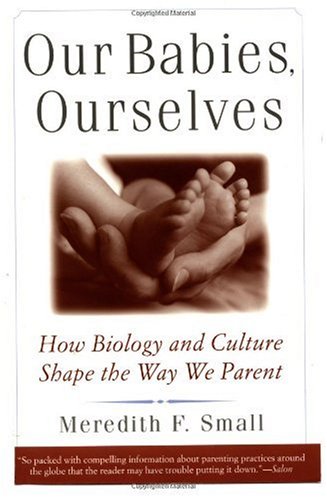The Evolution of the Breast
About sixty-five million years ago, at the end of the Mesozoic era and the beginning of the Cenozoic, the niche once dominated by the dinosaurs was available for other creatures. The opportunistic could move into that niche now empty of large reptiles, and prosper in their place. Among these creatures that flourished were small egg-laying animals. group that had been around for at least a million years and that sported specialized patches on their chests. Sitting on their eggs, the mothers of these species gave off body heat through these warming pads. The patches also had a glandular function, secreting a liquid rich in lysozyme that coated the eggs with an antibacterial slime and destroyed harmful microorganisms. When the eggs hatched, the new infants probably licked up some of that egg-coating ooze, which turned out to be immunologically protective once ingested. It may be that the newly hatched babies were simply hydrating themselves by licking their mothers' chests for the liquid that had collected there.^ In any case, those babies who licked up the fluid gained an advantage for their efforts in terms of survival—^they either grew faster or bigger, or they were healthier than those who ignored the opportunity. Maternal ooze eventually evolved strong nutrient properties that could sustain a baby even when the mother was unable to bring back food to the nest or the infant was too weak to forage on its own. Thus lactation was born.
At first the mammary gland must have been a kind of sweat gland, an eccrine gland, a gland that excreted material to the outside of the body like those found in armpits that excrete water and electrolytes. In fact. die gland might have emitted distinctive and attractive odors that brought premammallian infants close to their mothers' chests. Eventually these chest glands changed into apocrine glands, tissue that can synthesize proteins, carbohydrates, and lipids rather than just excrete water. We know that breasts, and the liquid they manufacture, must have coevolved with the infants' ability to find the nipple, suck, and digest what was ingested. Mothers must have already been adapted to stay close to their infants and engage in some sort of positive maternal care, and ifants must have been selected to turn only to their mothers and what they offered. Eventually these premammals began to give birth to live young, and most of them developed hair. But their most distinguishing characteristic, what set them apart from reptiles and birds, was their ability to lactate from specialized glands to nourish their young. Thus began the evolutionary path of modern mammals, animals in which the female members invest highly in each offspring by manufacturing and secreting for days, weeks, or months a fluid that is the sole food of their young.
Notes:
...and, therefore, the evolution of the mammal.
Folksonomies: evolution breastfeeding breasts
Taxonomies:
/pets/reptiles (0.460289)
/family and parenting/babies and toddlers (0.379216)
/family and parenting/motherhood/pregnancy (0.302448)
Keywords:
fact. die gland (0.996625 (positive:0.328349)), newly hatched babies (0.970522 (positive:0.426320)), strong nutrient properties (0.925491 (negative:-0.682582)), positive maternal care (0.911631 (neutral:0.000000)), mammary gland (0.831268 (neutral:0.000000)), sweat gland (0.823454 (neutral:0.000000)), eccrine gland (0.819467 (negative:-0.345393)), Maternal ooze (0.790397 (negative:-0.682582)), egg-coating ooze (0.785390 (negative:-0.429867)), new infants (0.782295 (negative:-0.429867)), mothers (0.778630 (positive:0.046775)), Mesozoic era (0.771981 (negative:-0.282105)), chest glands (0.766951 (negative:-0.281114)), apocrine glands (0.764979 (negative:-0.281114)), premammallian infants (0.763874 (positive:0.328349)), antibacterial slime (0.762436 (negative:-0.533002)), glandular function (0.761663 (negative:-0.418099)), harmful microorganisms (0.752701 (negative:-0.533002)), large reptiles (0.752409 (negative:-0.487833)), animals. group (0.751336 (negative:-0.236359)), body heat (0.740205 (negative:-0.248252)), attractive odors (0.738582 (positive:0.328349)), distinguishing characteristic (0.733302 (neutral:0.000000)), female members (0.722672 (neutral:0.000000)), modern mammals (0.720445 (neutral:0.000000)), sole food (0.714632 (neutral:0.000000)), evolutionary path (0.713215 (neutral:0.000000)), excrete water (0.710103 (negative:-0.312034)), chests (0.706269 (negative:-0.236359)), eggs (0.667079 (negative:-0.420749))
Entities:
mammary gland:Anatomy (0.724225 (neutral:0.000000)), sweat gland:Anatomy (0.537140 (neutral:0.000000)), Cenozoic:Region (0.472249 (negative:-0.282105)), ifants:Person (0.379392 (negative:-0.412867)), sixty-five million years:Quantity (0.379392 (neutral:0.000000)), million years:Quantity (0.379392 (neutral:0.000000))
Concepts:
Glands (0.970297): dbpedia
Exocrine gland (0.937640): dbpedia | freebase
Mammal (0.873400): dbpedia | freebase | opencyc
Milk (0.848920): dbpedia | freebase | opencyc
Exocrine system (0.771991): dbpedia
Reptile (0.759728): dbpedia | freebase | opencyc
Infant (0.739068): dbpedia | freebase | opencyc
Breast (0.737334): dbpedia | freebase | opencyc





